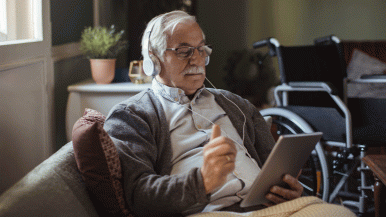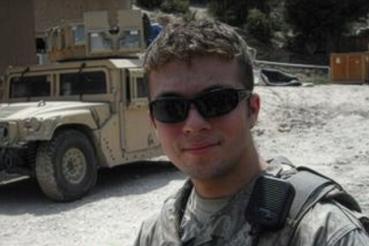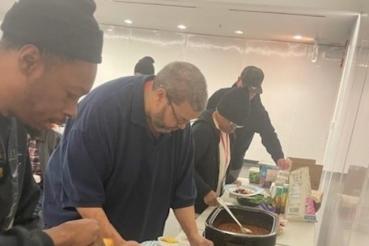Rush and other health care systems have increasingly been focused on supporting what matters most to the patients, families, and communities we serve.
One big focus of this work includes efforts to address the “social determinants of health”: the conditions in which we are born, live, play and work.
These conditions include things like exposure to trauma, food security, transportation access, neighborhood safety, access to education and safety in the workplace.
Studies have found that social determinants of health are responsible for 80% to 90% of health outcomes, and research has demonstrated that no matter how far advances in medicine and health care take us, the health of individuals and communities will not improve if these root-cause social factors are not addressed.
The COVID-19 pandemic is highlighting one of these critical factors: social isolation.
What is social isolation, and why is it a health risk?
Defined as an “objective deficit in the number of relationships with and frequency of contact with family, friends and the community,” social isolation is linked to increased rates of loneliness and suicide, hypertension and other physical health effects. In fact, social isolation has been found to be as dangerous to health as smoking 15 cigarettes per day — and has been identified as a public health priority.
In a national survey in August 2020, 61% of respondents 50 years of age and older reported experiencing social isolation since the pandemic began. And the isolation is compounded for those living in rural areas and/or urban neighborhoods plagued by violence.
Connection to others is a fundamental piece of what it means to be human. It provides meaning and purpose in our lives and creates safety nets of supports we turn to when we experience adversity. Yet, to the detriment of our most vulnerable fellow humans, the majority of American society has consistently prioritized values like self-reliance and independence over connection and interdependence. And, despite the prevalence, risks and costs, our health care system seldom screens for or discusses social isolation with patients. The pandemic is highlighting that this must change — now and in a post-pandemic era.
Global efforts to get more connected
As we work to promote social connectivity in our society, we can learn from efforts from across the world.
For example, the United Kingdom has begun to include social isolation in its national policies.
In 2018, then-Prime Minister Theresa May included social isolation and loneliness as strategic priorities, appointing a Minister of Loneliness, dedicating funds to nonprofit organizations to address the issue, and joining with tech companies to innovate creative solutions. This national focus has led to significant innovations, such as the city of Leeds equipping frontline city workers with an app where they can document if they notice possible signs of isolation at an address when out in the community (e.g., closed curtains or piles of mail); the app then creates heat maps that inform the city’s community outreach in a more efficient way.
Here at Rush University Medical Center, our Social Work and Community Health team has made it a priority to address social isolation and loneliness, as recently highlighted to local and national audiences. The pandemic has prompted us to take a step back to “think big” and dream of what meaningful interventions would look like. These are some examples of how our team is putting our big ideas into action:
- As part of our regular efforts to ask patients about social factors that influence their health, we now ask about social connection (“In a typical week, how many times do you talk with family, friends, or neighbors?”).
- To address potential isolation, we have created interventions such as a friendly caller initiative in which volunteer community members, Rush employees, students and AmeriCorps members make weekly socialization calls to older adults who request them. To date, over 600 friendly calls have been completed! Note: If you are interested in receiving calls or volunteering with the initiative, please call (800) 757-0202.
- We host the Schaalman Senior Voices program, which offers the opportunity for older adults to create video stories to capture and share what matters to them most. Many of these messages have offered hope to others around how to maintain connection and purpose. We invite you to visit https://aging.rush.edu/schaalman/ to learn more and view dozens of videos shared by older adults from the west side of Chicago, and record your own video!
As the pandemic prompted hospitals and clinics to limit visitors to contain spread of the virus, Rush’s social work teams have worked to identify individuals who may need reasonable and safe accommodations to the no-visitor policy. For example, over the summer a team in specialty care was able to bring a patient living in long-term care and her caregiver/life partner together in person for the first time since the pandemic as he accompanied her to an appointment. Having the patient’s caregiver there not only ensured the patient’s needs could be fully explored, but also provided a crucial opportunity for social connection during such an isolating time.
Learn more about Rush’s other offerings to support social connection within the communities we serve, and keep up with our latest events.
Tips to combat social isolation
So, how can we reduce the risks that come with social isolation?
Connection comes in all shapes and sizes, and it is essential that we take time to recognize what it means to each and every one of us. It may mean an increased use of technology to creatively connect with loved ones, or it may mean taking a step back from technology to spend more time cultivating mindfulness and rest. It may look like re-inventing social gatherings, creatively engaging with our faith communities and/or engaging in telehealth sessions with a mental health provider. It may mean reaching out to a health care provider or other trusted contact to ask for ways to connect with others.
Finally, it may mean proactively reaching out to others in our lives who themselves may be isolated. This includes older adults, individuals with mental illness and/or cognitive decline, those who experience systemic oppression, those living in poverty and individuals with complex health conditions. Ways to make a difference include making more regular phone calls, sending a note and/or email, dropping off meals and/or finding a place to meet outdoors.
Although there will always be systemic challenges beyond our control, our capacity to hold space and connection to others makes a tremendous impact: Not only can it make a significant difference to the people we’re reaching out to, it can also increase our own social connections.




